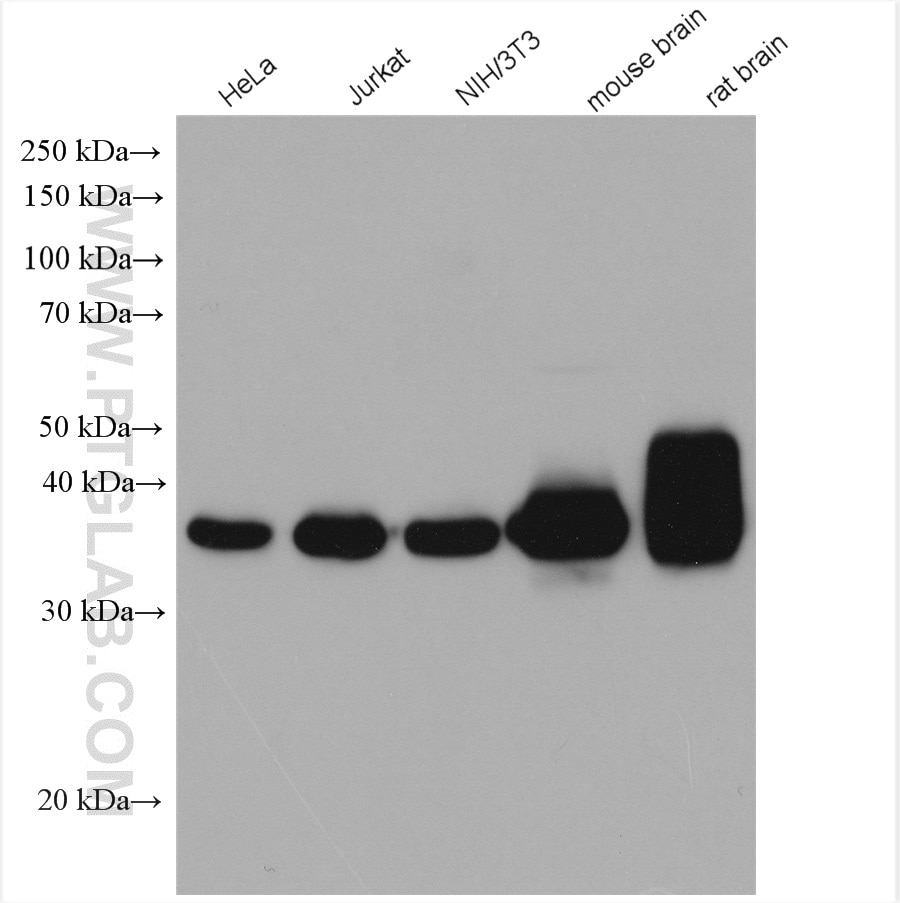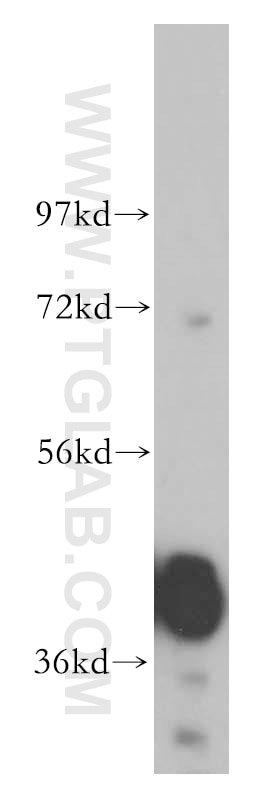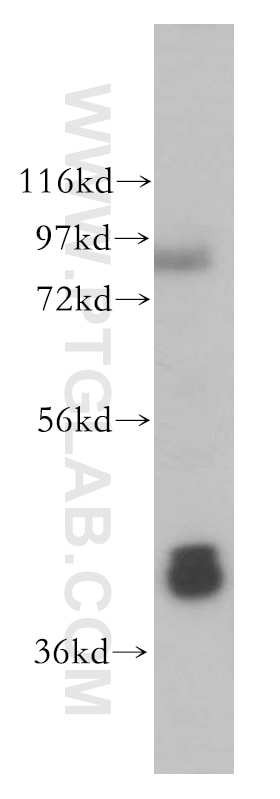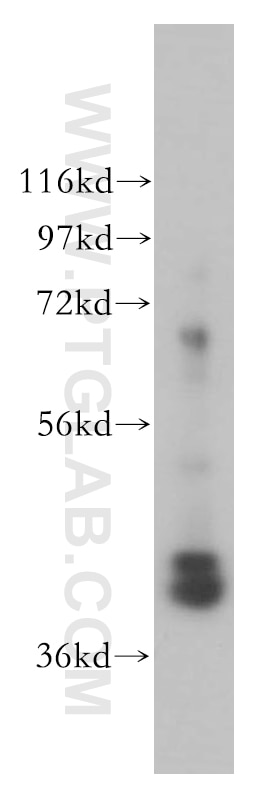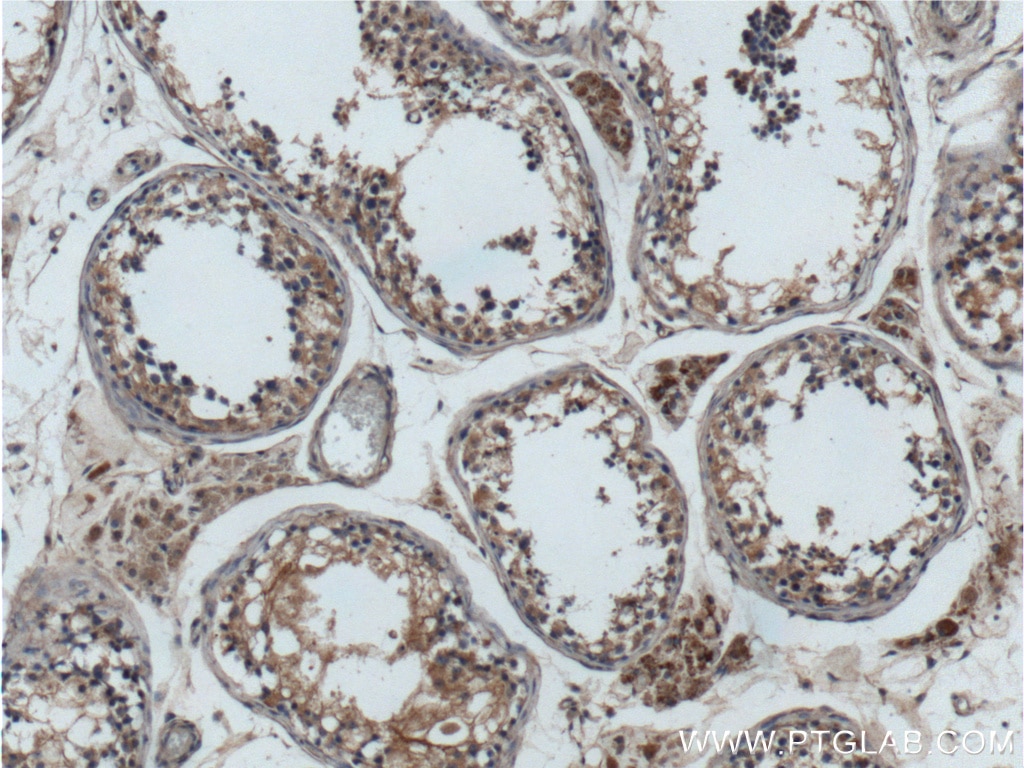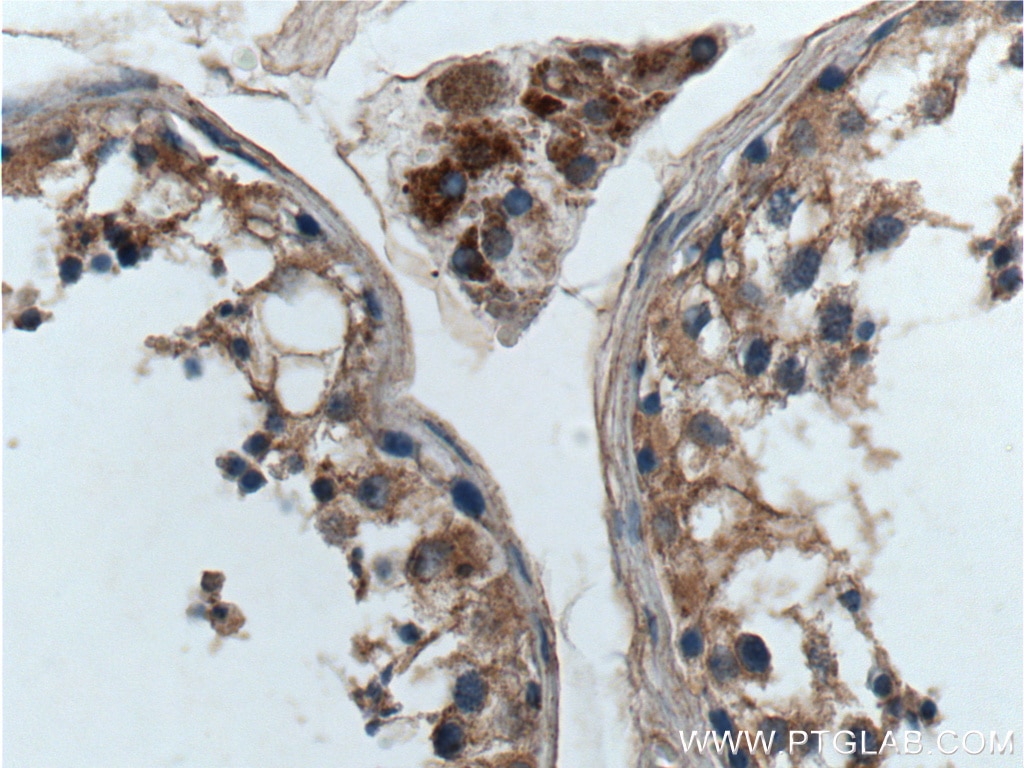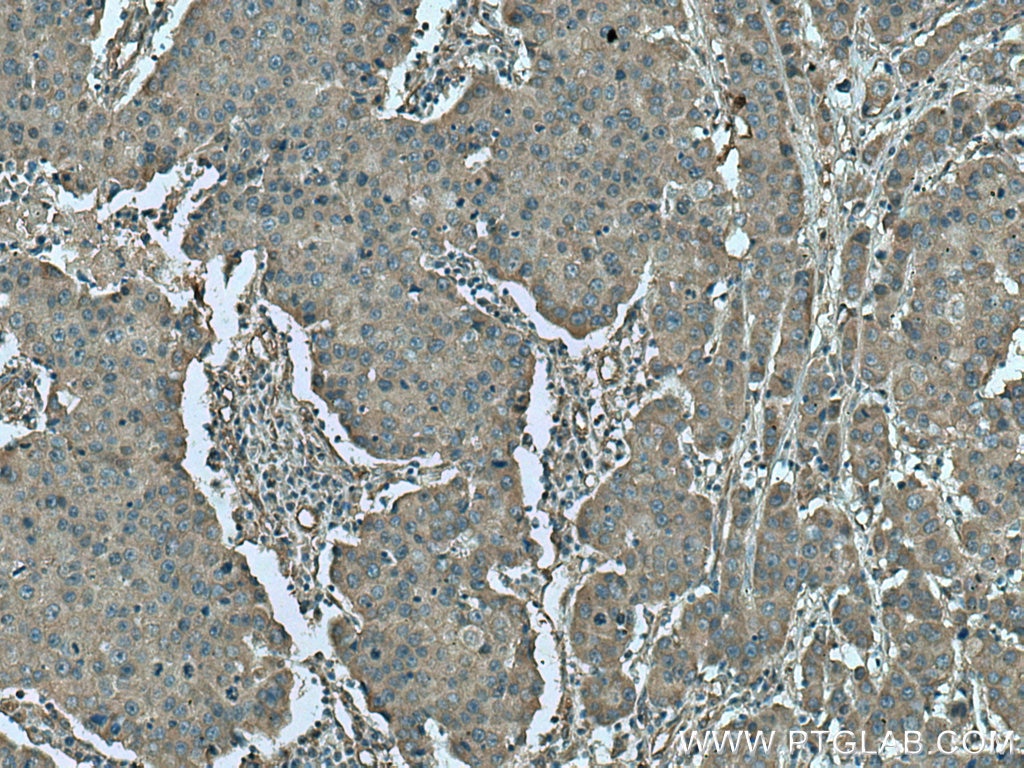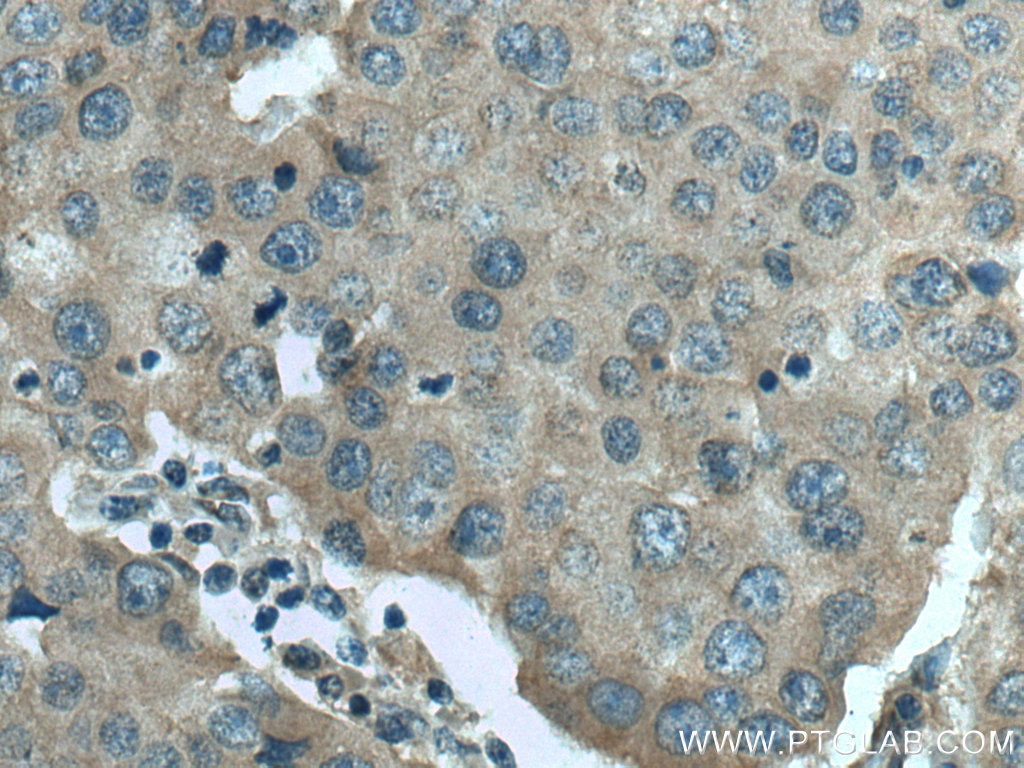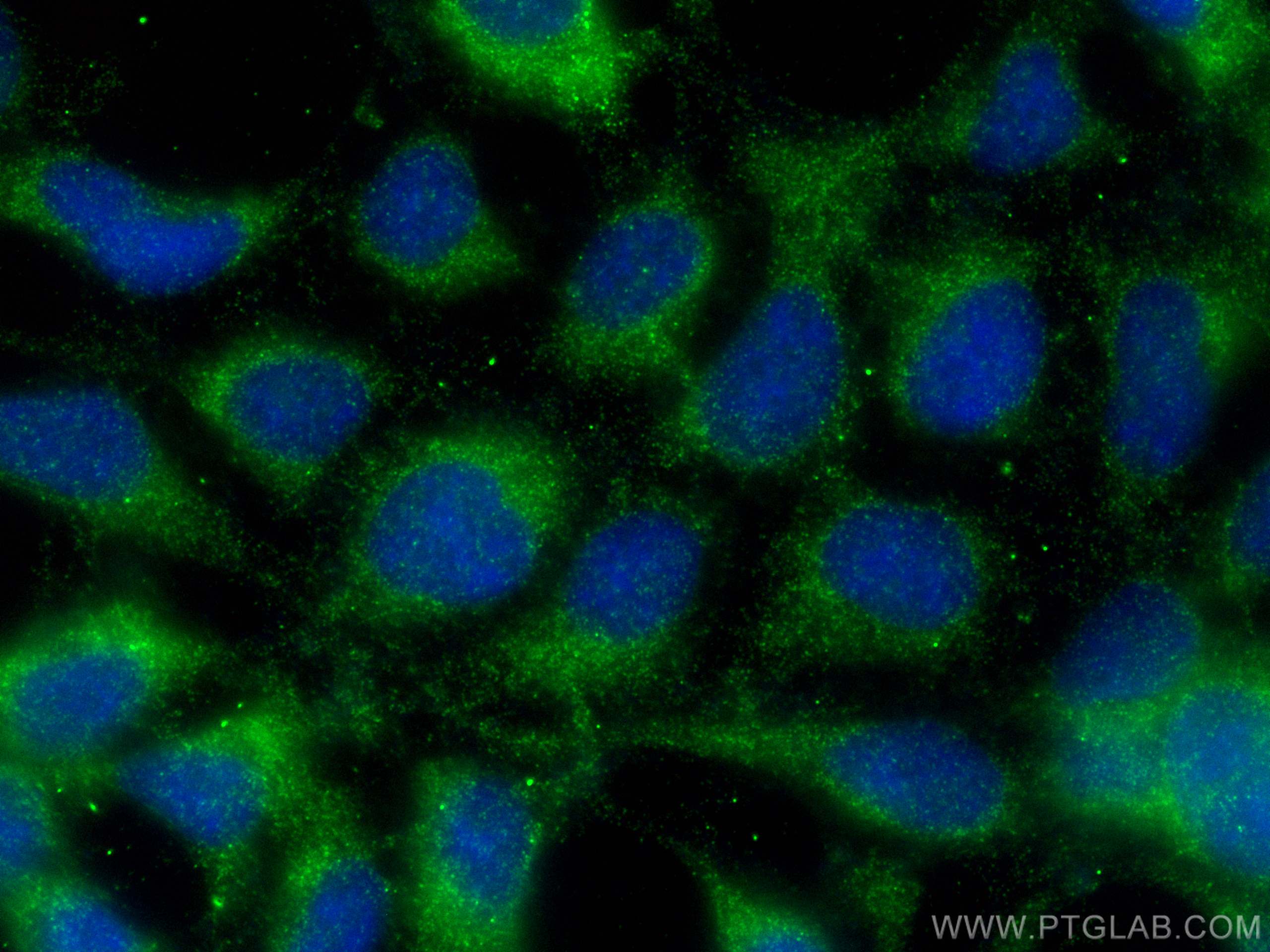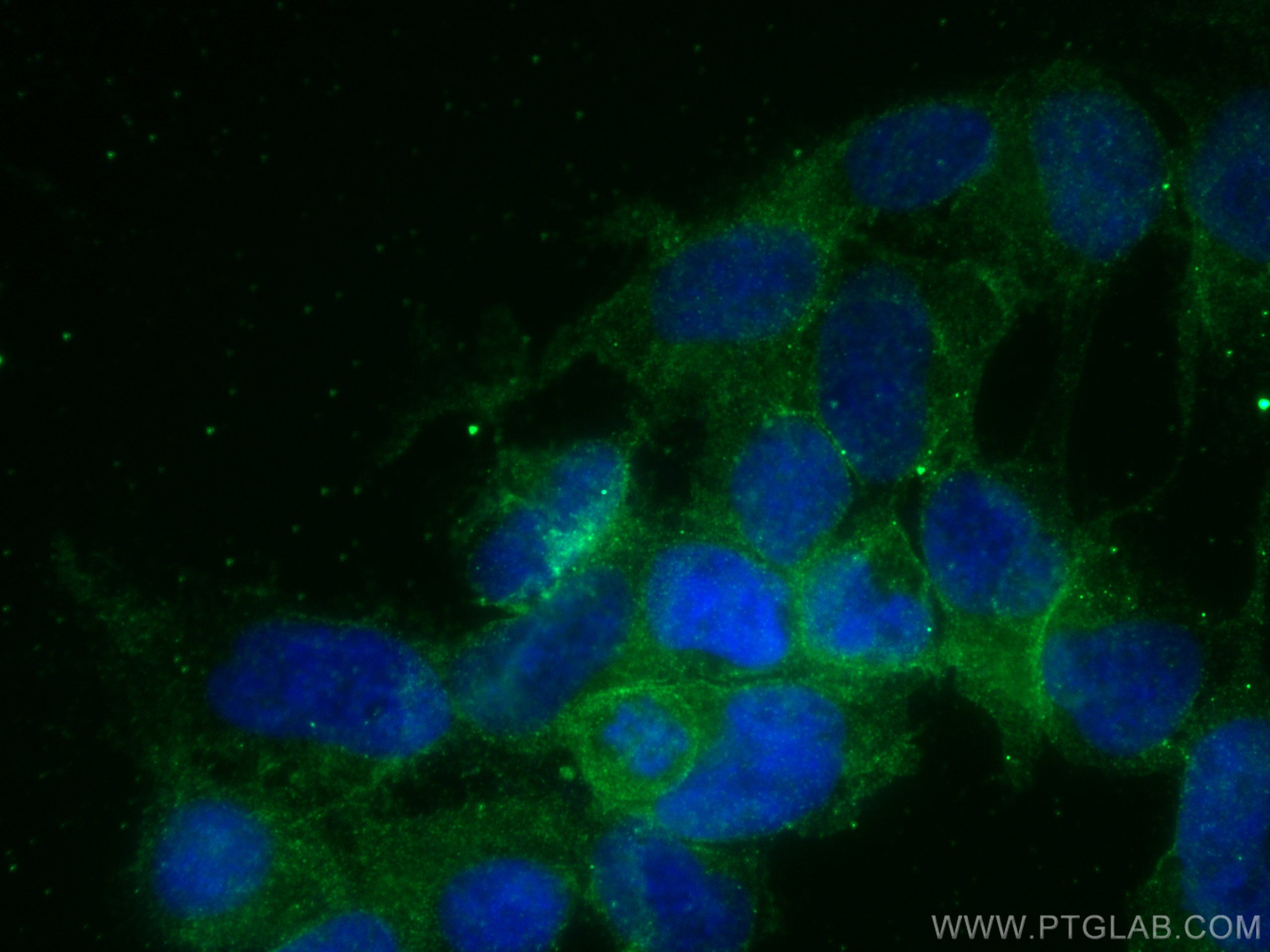- Featured Product
- KD/KO Validated
GNAQ Polyklonaler Antikörper
GNAQ Polyklonal Antikörper für WB, IHC, IF/ICC, ELISA
Wirt / Isotyp
Kaninchen / IgG
Getestete Reaktivität
human, Maus, Ratte
Anwendung
WB, IHC, IF/ICC, ELISA
Konjugation
Unkonjugiert
Kat-Nr. : 13927-1-AP
Synonyme
Geprüfte Anwendungen
| Erfolgreiche Detektion in WB | HeLa-Zellen, humanes Hirngewebe, Jurkat-Zellen, Maushirngewebe, Mauslungengewebe, Maushautgewebe, NIH/3T3-Zellen, Rattenhirngewebe |
| Erfolgreiche Detektion in IHC | humanes Hodengewebe, humanes Mammakarzinomgewebe Hinweis: Antigendemaskierung mit TE-Puffer pH 9,0 empfohlen. (*) Wahlweise kann die Antigendemaskierung auch mit Citratpuffer pH 6,0 erfolgen. |
| Erfolgreiche Detektion in IF/ICC | HEK-293-Zellen |
Empfohlene Verdünnung
| Anwendung | Verdünnung |
|---|---|
| Western Blot (WB) | WB : 1:1000-1:6000 |
| Immunhistochemie (IHC) | IHC : 1:50-1:500 |
| Immunfluoreszenz (IF)/ICC | IF/ICC : 1:50-1:500 |
| It is recommended that this reagent should be titrated in each testing system to obtain optimal results. | |
| Sample-dependent, check data in validation data gallery | |
Veröffentlichte Anwendungen
| KD/KO | See 2 publications below |
| WB | See 9 publications below |
| IHC | See 1 publications below |
| IF | See 3 publications below |
Produktinformation
13927-1-AP bindet in WB, IHC, IF/ICC, ELISA GNAQ und zeigt Reaktivität mit human, Maus, Ratten
| Getestete Reaktivität | human, Maus, Ratte |
| In Publikationen genannte Reaktivität | human, Maus |
| Wirt / Isotyp | Kaninchen / IgG |
| Klonalität | Polyklonal |
| Typ | Antikörper |
| Immunogen | GNAQ fusion protein Ag4947 |
| Vollständiger Name | guanine nucleotide binding protein (G protein), q polypeptide |
| Berechnetes Molekulargewicht | 42 kDa |
| Beobachtetes Molekulargewicht | 38-40 kDa |
| GenBank-Zugangsnummer | BC057777 |
| Gene symbol | GNAQ |
| Gene ID (NCBI) | 2776 |
| Konjugation | Unkonjugiert |
| Form | Liquid |
| Reinigungsmethode | Antigen-Affinitätsreinigung |
| Lagerungspuffer | PBS with 0.02% sodium azide and 50% glycerol |
| Lagerungsbedingungen | Bei -20°C lagern. Nach dem Versand ein Jahr lang stabil Aliquotieren ist bei -20oC Lagerung nicht notwendig. 20ul Größen enthalten 0,1% BSA. |
Hintergrundinformationen
GNAQ is a proto-oncogene closely related to the α subunit of guanine nucleotide-binding proteins (G proteins) that serve as key intermediates between membrane-bound G-protein-coupled receptors (GPCRs) and GPCR signalling nodes. Aberrant expression and activity of G proteins and GPCRs are frequently associated with tumorigenesis. Recent studies show that oncogenic activating mutations in GNAQ are present in 80% of the melanomas. The calculated molecular weight of GNAQ is 42 kDa. This antibody can detect a band of 38-40 kDa in SDS-PAGE. (PMID: 33993733)
Protokolle
| PRODUKTSPEZIFISCHE PROTOKOLLE | |
|---|---|
| WB protocol for GNAQ antibody 13927-1-AP | Protokoll herunterladen |
| IHC protocol for GNAQ antibody 13927-1-AP | Protokoll herunterladenl |
| IF protocol for GNAQ antibody 13927-1-AP | Protokoll herunterladen |
| STANDARD-PROTOKOLLE | |
|---|---|
| Klicken Sie hier, um unsere Standardprotokolle anzuzeigen |
Publikationen
| Species | Application | Title |
|---|---|---|
J Exp Med Uncovering a novel role of PLCβ4 in selectively mediating TCR signaling in CD8+ but not CD4+ T cells. | ||
Elife Gq activity- and β-arrestin-1 scaffolding-mediated ADGRG2/CFTR coupling are required for male fertility. | ||
FASEB J Gαq/11 Signaling Modulates Fibroblast Growth Factor 23 Production and Contributes to Acute Kidney Injury | ||
Proteomics iTRAQ-based proteomic analysis of dioscin on human HCT-116 colon cancer cells. | ||
Oncol Rep G protein subunit α q regulates gastric cancer growth via the p53/p21 and MEK/ERK pathways.
|
